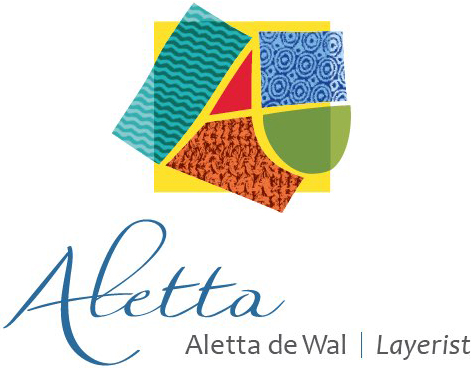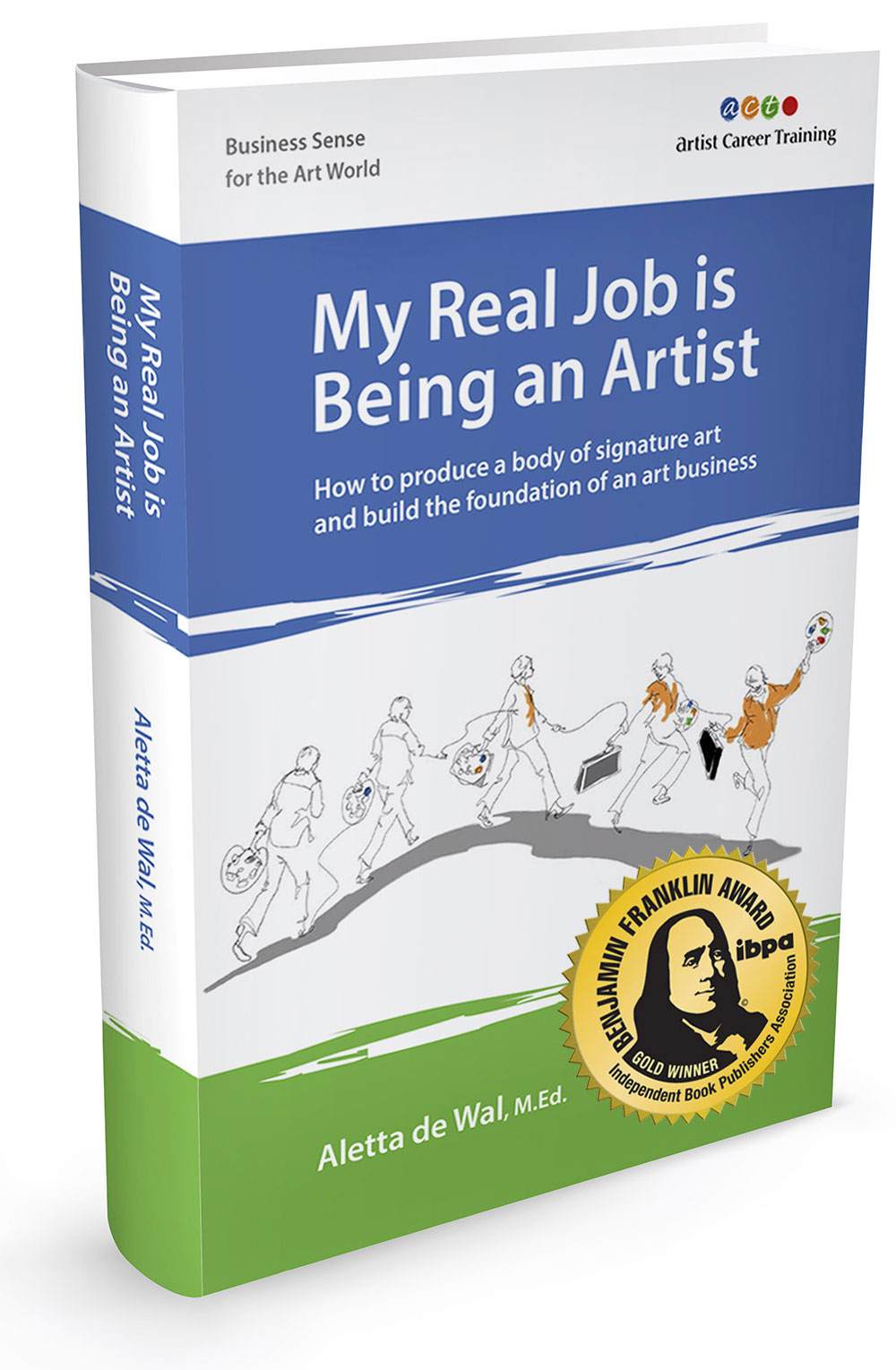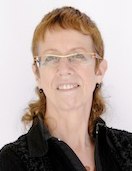There is often additional information on the recording that is not in this written interview. Inspire yourself and listen while you make art. __________________________________________
My primary goal in these interviews is to inspire artists with stories of people who make a living making art and who consider it "a real job." Your art and art career may be on a different path, but there is always something to learn from the experiences of your colleagues.
 The only woman in the male-dominated field of large-scale glass, BJ Katz, is one of the top artists working in glass today according to John Villani, Arizona Republic art critic. Katz has an impressive career as creator of commissioned glass artwork for collectors, corporations and institutions worldwide. Katz's artwork is known for its originality, intricacy, beauty, and scale. A.C.T.: What prompted you to start your professional art career? I began my studies early. Born to parents who encouraged my passionate interest in art; they introduced me to literature, theater, music, dance, and a wide array of visual artists. The apprenticeship of an artist is a lifetime journey. Since early childhood I have felt that being an artist is my calling. Making it a professional career was a logical development from this core belief.
As Ernest Hemmingway once remarked, 'we are all apprentices at a craft no one can master.' I feel the same way about glass. I wake up each day eager to meet the next challenge. My spirit thrives on learning as I create. Glass is only limited by ideas and creativity-- the sky is the limit.
Professionalism comes from creating commissioned artwork on time, in budget and as agreed. My professional approach to my career has brought me long-term clients who bring me many opportunities. We enjoy open communication and can count on each other. I also enjoy a certain amount of press coverage and that is a product of my professional approach to my career.
As a professional artist I believe that it is my obligation to help the field and to help other artists in the field.
A.C.T.: What is your artistic direction? What is your "life's work" as an artist - what legacy do you want to leave?
My artwork has a decidedly feminine, fluid and mysterious quality. I am heavily influenced by and take inspiration from nature. Themes and imagery recur.
Three major bodies of work have emerged repetitively throughout my career: human figures, sea life sculptures and outer space themed artwork.
My capability is reflected in the wide range of installations that I have created. Some of the most prestigious to date are my award winning sculptural art wall, 'Feeling Fall', commissioned by American Express Corporation, the sculptural wall, 'Ideas Create Reality', commissioned by American College Testing (ACT), 'Elements of Nature', commissioned by Baylor University Medical Center, and recently won a competition for commissioned public artwork for the BART (Bay Area Rapid Transit) station in Milpitas, CA to be completed in 2016.
I love working with others in creating artwork for public spaces and private collections. I collaborate with Art Consultants, design professionals, user groups and collectors, and their input often expands my vision.
I will be creating monumental artwork for the Milpitas station. I am working in collaboration with Valley Transportation Authority, artist Amy Trachtenberg, architect Eli Naor of VBN Architects of Oakland, and Jack Mackie, coordinator of public art, of Seattle.
I believe that my legacy will involve my role as a pioneer, being one of the first women to break into the field of major commissioned architectural glass art. Also, in founding my studio, Meltdown Glass, I set out to create a studio that would bring pride and distinction to contemporary American glass art similar to what Orrefors Kosta Boda has done for Swedish art glass, Lalique for French, or Tiffany for an earlier period of American art glass.
I'm not sure what others will view as my life's work or legacy. My 'Facets of Womanhood' series is what I regard as the seminal work of my career to date. Semi-autobiographical and including prose, these monumental self-portrait pieces examine women's major challenges and passages.
A.C.T.: What is your art business direction and what are your business goals? I create artwork on an architectural scale that transforms space. Artwork should fit its intent and its context, and should be beautiful. At my studio, Meltdown Glass, I produce sculptures, and all kinds of functional art glass: art walls, water walls, glass doors, and windows to name a few. I have had the pleasure of working on over a hundred and fifty commissions. My artwork is represented in a dozen major art galleries.
Expanding and improving my art studio has been a goal over the past three years. This economy has been a difficult time to complete the expansion. It certainly has not been without its trials, but it exceeds my expectations - a state of the art 18,400 sq. ft. glass studio with all the bells and whistles that will make the work of creating glass art easier and safer. I hope to use the new studio for public education in the arts as well as other service-oriented goals.
My next art business direction is to promote my artwork in Europe and other parts of the world. About one year ago we started promoting my artwork on Social Networking sites such as Facebook, Linked-In and Twitter. I found a strong interest in my work from Denmark, which I attribute to the simplicity, elegance and clean lines of my art glass.
When I have a retrospective, it will show my evolution from small to large works and my collaborative approach. Most of my recent work is of architectural scale and integrated into buildings, so they will be shown in visuals.
A.C.T.: Please describe a typical day, and a typical month so readers can understand how you manage your time, money and energy. I seem to have boundless energy because I love what I do and always have lots of untried ideas. I don't know that I have a typical day other than it starts at 6:00 -7:00 a.m. and ends at 5:00 - 6:00 p.m.
I have ten full time staff so others, in part, manage my time and money-- we work as a team. My staff often schedules my time including client meetings, being in the studio creating artwork and working with staff on artwork and presentations. I travel to make client and sales presentations, typically about two trips a month.
Every piece of art glass we create is original so there are ample challenges, which are part of the fun. My studio fabricates textured art glass that I design. I work with other staff on the design of new textures and colors. I troubleshoot any problems staff may be encountering.
There is never enough money and competing needs for what to do with it including promotion, new artwork, and salary and staffing.
A.C.T.: What peak moments have you had as an artist? I am blessed to enjoy many wonderful moments in my art career. As my career progresses, how I define a peak moment changes. I am usually most enthusiastic about what I'm currently working on. I love to think creatively about new opportunities, I enjoy being busy, and, thus far, I have not experienced a fallow creative moment.
I always feel that receiving an award is a peak moment. I received the 2008 Arizona Artist of the Year award from Art Renaissance Initiatives and the 2006 Masters of the Southwest award from Phoenix Home and Garden magazine among others.
A.C.T.: How do you define success and how do you celebrate it? I define success as enjoying the fullness of my life. It is a blessing to love what you do for work. I define success as having opportunities to express my creativity while creating beauty in our built environment.
I believe in celebrating successes. For example, I am planning a huge studio warming party to celebrate it. I also love to celebrate personal events, milestones, and holidays. Carpe diem!
A.C.T.: What obstacles have you encountered in your art business and how have you handled them? I have encountered more obstacles than I care to outline. In general, I handle them with patience, steady actions and persistence. Persistence and optimism are strong character traits of mine and I would not be where I am today without them. I always take a long-term view of all situations.
Rejection is part of being an artist - don't take it personally or get discouraged, especially in the early stages of your art career. Keep putting yourself out there. Art being a matter of taste; there is no right or wrong. Rejection simply means that the other person has different taste, desires or experience. Remember that each 'no' is a step on the way to a 'yes.'"
A.C.T.: What opportunities has a professional approach to your career brought you that you might otherwise not have had? Art classes were the foundation for my earliest educational years and included painting and sculpture at the Art Institute of Chicago. Mesmerized at an early age by the paperweight, Oriental art and French Impressionist collections of the Art Institute, spending time there set me on a course for a career and life's calling creating original works of art in the challenging medium of glass. Later I majored in Art at Northwestern University in Illinois. A love of Art History showed me the path of the Masters and provided an understanding of contemporary art informed by its antecedents in art history.
When I attended Pilchuck, William Morris, encouraged me to pursue a career in glass art. I purchased my first kiln for my studio in my garage in Arizona in 1993. Eighteen-hour days spent laboring over technique and detail; I honed my skills through practice, experimentation and an unwavering love of glass.
After several years of hard work and self-study, I embarked on an educational pilgrimage to Australia and New Zealand. While there I apprenticed to Ann Robinson and David Wright, dedicating myself to learning new techniques and improving my glass skills. David Wright inspired me with the joy of commissioned artwork. It takes me places artistically that I might not go on my own.
In 1998 at the Glass Art Society Conference in Japan, I met and worked with several Shibori (traditional Japanese fabric dying) artists. The cultural exchange of ideas and aesthetics is reflected in my artwork.
A.C.T.: Who are your role models and mentors? What was the best advice they gave you? Robert McCall, the NASA space artist who did the artwork for Stanley Kubrick's '2001: A Space Odyssey' was a mentor who encouraged me to open myself to collaboration. Many artists feel that they give up a part of themselves or the authenticity of their artwork if they collaborate. This could happen, but if one has confidence in one's vision and one's limits, collaboration opens one in new directions, which can expand one's artwork. Robert McCall was a great artist leaving a wonderful legacy of artwork and a great human being, and his recent passing saddens me.
George and Connie Cohen were role models, teachers and mentors to me. Connie talked with me about the importance of including yourself in your artwork. She did many self-portraits. As an art student George always inspired me to strive to do my best work and to never give up. He recognized the difference and he regretted that he hadn't pushed his own career further.
A.C.T.: What is your art marketing strategy? What promotional materials and actions do you use most often? My art marketing strategy is to think creatively about opportunities to market, and to get as much publicity as possible by way of Press Releases and free media coverage for each of my accomplishments as well as writing articles for professional journals.
My web sites http://www.bjkatz.com/ and http://www.meltdownglass.com are also very important.
A.C.T.: What changes have you experienced in the art market and how have you navigated them? What lessons have you learned?
The past several years have been very difficult on most people, particularly in the fields of art, design and architecture. I feel fortunate to have navigated this time relatively well. Anyone still in business should congratulate himself or herself.
A.C.T.: What advice would you pass on to artists who want to succeed in any economy? Hard work, persistence and not being afraid to get a job to help you make it through. I encouraged an artist friend to get a job teaching art to adolescents when I saw the economy heading south, and she's very glad she did.
Respond proactively to any and all opportunities that seem to offer possibilities to you. Keep your enthusiasm.
A.C.T.: Based on your involvement in the Artist Career Training community of professional artists, how can other artists benefit from getting involved in our programs and coaching services? There is tremendous benefit in being involved with Artist Career Training. Learning from other artists who are at different stages was very helpful. Aletta and Artist Career Training are a great sounding board for helping you build an art business that lasts.
A.C.T.: Finally, here is a brief critical essay about B.J. called Lessons for Living: BJ Katz's Self Reflection in Glass "An experience of beauty may be intense, leaving a permanent impression, or quite mild and soon all but forgotten. But it always resembles a conversion experience, the mind's joyful capitulation to a recovered or new belief." -Peter Schjeldahl
BJ Katz is one of a growing number of artists who believes that art can and should be beautiful. She rejects the notion that beauty in art is not vital. The autobiographical nature of her recent series, "Facets of Womanhood," goes beyond mere visual seduction, however, addresses deeper issues about life, womanhood, and her own emotional and spiritual place in the world. Merging explicit text and silhouetted images of the female form in glass, Katz shares personalized experiences and beliefs about important life concepts.
While the title of this series refers to womanhood, Katz sees herself as more of a humanist than a feminist, believing that both men and women can benefit from the efforts and views of feminism. She made this shift in thinking when she became aware of the polarizing effects of the "war between the sexes." As Katz explains, "We should look at extremes as something to pay attention to and to change in our lives." Through her art, she gives voice to her own values which she believes will move society from ignorance to a more elevated way of thinking.
While healing and transcendence have long been elements in Katz's art, the inclusion of text and information about her own spiritual quest is new to the artist. The five panels that make up the "facets" are created as free-standing panels of glass in metal frames. From a source embedded within the frame, a gentle light emanates. The glass panels act in tandem with first-person messages placed on the panel in gold-adhered to the surface through an annealing process. Offsetting the text are silhouetted images of her own body in a textured background painted with semiprecious metals and pre-cut and cast-adhered symbols for woman. The symbols speak for themselves, while the quotes are combinations of autobiographical journal entries, therapeutic affirmations, and moral musings.
Revelatory in outlook, Katz breaks down her focus into five distinct areas: Embracing Life; Courage, Strength and Overcoming Adversity; Intimacy and Fertility; Understanding, Forgiveness and Humility; and Compassion and Giving. These areas of investigation are clearly parts of her life journey distilled into visual form, documenting a breakthrough into maturity.
Reflecting on her new approach to art-making as a vehicle for change, Katz emphasizes, "We don't always know our purpose until the end. You can look at life through a number of filters-it's our choice." Openly acknowledging that therapy has allowed her to obtain this awareness, she admits that life's "slings and arrows" once held her back from a more open creativity. Now she declares that she is able to open herself to love and to embrace the power of her creative side. Nurturing the careers of young artists and training them about the nuances of glassmaking have long been parts of Katz's studio routine. She now believes that her purpose includes providing joy to her viewers of her art and reaching out to others by sharing her feelings about spirituality and humanity.
Katz was exposed to art at an early age by her parents, who introduced her to literature, theater, music, dance, and the visual arts. As a student at the Art Institute of Chicago, she took classes in painting and sculpture and later majored in art at Northwestern University in Illinois. In 1991, however, she found her calling in glass while taking a course at the famed Pilchuk Glass School. Encouraged by noted glass artist William Morris, she purchased her first large glass kiln for a new studio in Arizona and embarked on an intensive study of the craft.
After several years of independent study, she traveled to Australia and New Zealand to apprentice with Ann Robinson and David Wright, further enhancing her skills. A subsequent trip to Japan added to her technical, artistic, and cultural influences that are reflected in her art. From these experiences Katz founded the "Meltdown Glass Art and Design" studio in 1993, building an impressive career that has included major installations of commissioned glass works for corporations and institutions world-wide.
Among the many series of works that she has completed is "Self Acceptance Series," focusing on her body shape; "Winged Victory Series," featuring idealized Greek male and female torsos; and "Romanesque Series," all created in a combination of glass techniques including cast, draped, painted, etched, and fused with precious metals. The technique used to create the dashes of vibrant, spectral color is called dichroic flecking; the glass object is placed in a weightless chamber and nozzles spray on the colored material. Because Katz loves to push the envelope-from sandblasted etching in leaf patterns and vines on an upright torso to arcs of prismatic color, she seeks to create a lively visual sensation. Underlying the visual pleasure of her work, however, is the greater message-the celebration of humanity and the joy of the human body's diversity.
In 2002 Katz created "Sunshine Syncopation," a large wall of glass at the Forensic Science Center in Arizona. Aiming to "bring beauty to the people who work there," she designed the piece to transcend the focus on death that pervades the work at the center. For the American College Testing Center in Iowa City, Iowa, she created a one hundred foot long wall emulating a river and its banks. Katz depicts the flow of the river with representations of pebbles on the surface and arched slices of dichroic color highlighting the affect of swirling, flowing water. The visual delight and movement of this piece celebrates nature and life. Her newest body of work, "Cosmos Series," contains orbs, nebulae, and waves that are both painted and etched in areas filled with overlapping and free-standing images.
A life-threatening illness changed Katz's outlook on life and how it affects her art. With the help of therapy and meditation, she had an emotional breakthrough that became inspirational. Her illness now under control, Katz still executes major commissions, but this pivotal time proved to be a catalyst for a new statements in her art-literal ones in fact. Katz explains, "I began to question why I am an artist and what I really want to say with my art." No longer imbedded in abstraction, her message to the world is made more direct with the addition of direct quotes. With the freedom to create a body of work not lead by commission, she has acted on her desire to change perceptions about life by sharing her own. Like free-standing stellae, Katz documents her victory over negative emotional behavior and states of being. In doing so through the beautiful, seductive qualities of glass, she aspires to help others learn their own life lessons.
-Julie Sasse, Curator of Modern and Contemporary Art Tucson Museum of Art
|

















